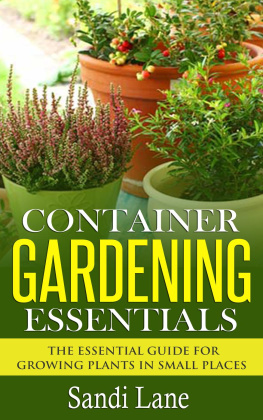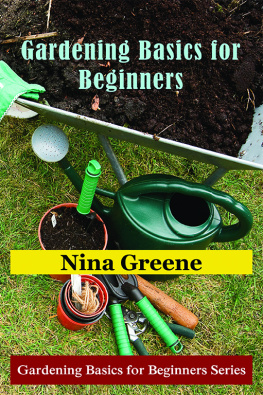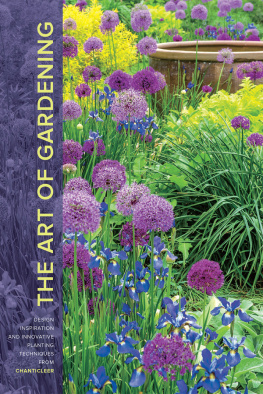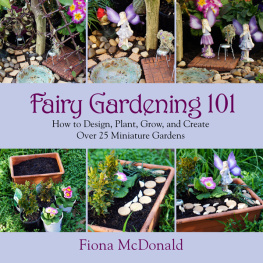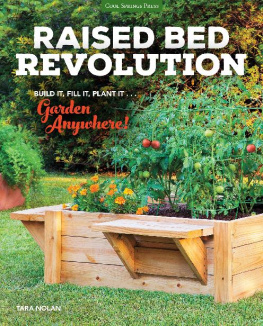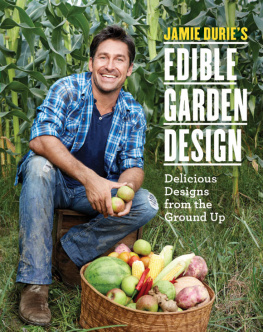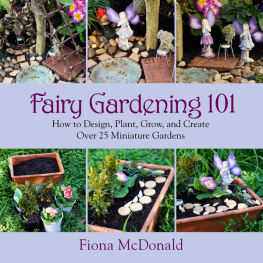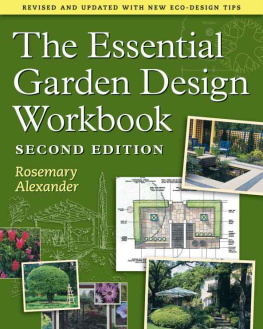



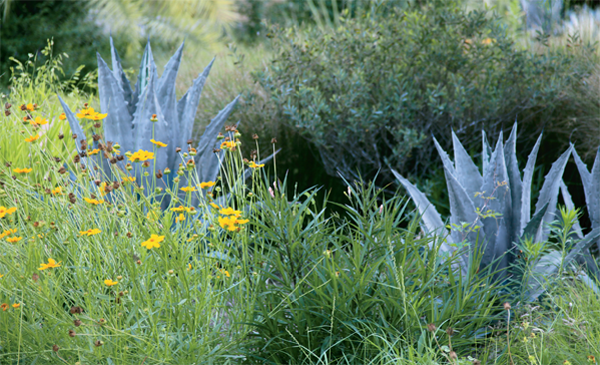
The notion of what makes a visually presentable front yard is steadily changing around the country. Dylan Robertson designed a garden in Austin, Texas, that avoids the usual roses and impatiens but still looks green and lush without wasting water. The emphatic silhouettes of blue agaves anchor wispier shapes of native lanceleaf coreopsis and grasses.
CONTENTS
PART I
G ARDEN W HERE Y OU L IVE
PART II
C ONSIDER THE M ATERIALS
PART III
E DIBLE G ARDENS AND C OMMUNITY
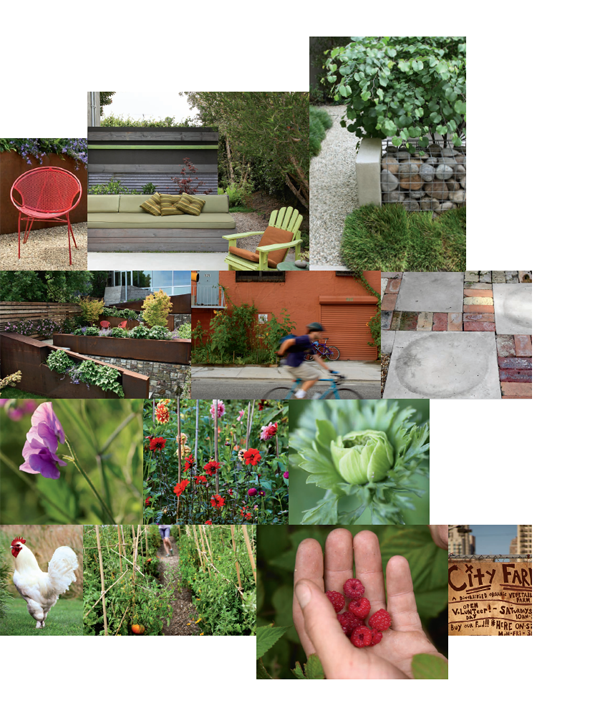

Black bugbane (Actaea racemosa)
INTRODUCTION
The Education of a Responsible Gardener
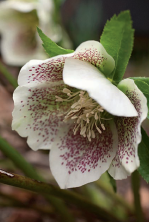
HOW DID YOU GET STARTED GARDENING? ITS A QUESTION IM ASKED QUITE OFTEN.Like most gardeners, I refer to my childhood. Some of my earliest memories are of plants: feeding the roses with my dad, riding in the car to the nursery in the bright West Texas springtime, or admiring the bearded irises in our neighbors front yard. Indoors, I trailed my mother as she watered the huge Boston ferns in the front window with tepid tea (for its acidity) and pinched back her collection of African violets on the living room tagre.
As a child, I was surrounded by the culture of growing things. My parents both came from agricultural families. My father grew up during the Depression on the dry, endlessly flat fields of a North Texas farm; my mother on humid coastal plains near the Gulf of Mexico. In Abilene, where I lived until college, Dad actively gardened our backyard for a number of years when we were kids. Even though the beds were small, he chose his varieties carefully and perhaps nostalgically from his youth: black-eyed peas, okra, peppers, flat green pole beans, and tomatoesthe flavorful varieties of vegetables that were, and still are, hard to find in many supermarkets.
Even though I usually tried hard to dodge anything resembling household chores, I was happy to spend hours in the summer tagging along with Dad as he puttered around the garden, planting seeds and helping him place old milk cartons over the tomatoes and peppers so that the seedlings would be sheltered from late spring frosts. I wonder now if he went to such effort for whatever actual produce the garden yielded, or if he had a broader plan to share part of his agricultural childhood with his children. Even in our dry climate, where the natural landscape was primarily prickly pear and mesquite, we didnt worry too much about conservation or issues like water usage. It didnt matter if our hybrid tea roses required a lot of chemical coddling, fertilizer, and fungicides to keep them in bloom. In fact, all the fussing and fretting might have made them more special. To be honest, I preferred our struggling bushes of Chicago Peace to the wilder shrub roses along the back fence that seemed to thrive and bloom prolifically on nothing more than neglect.
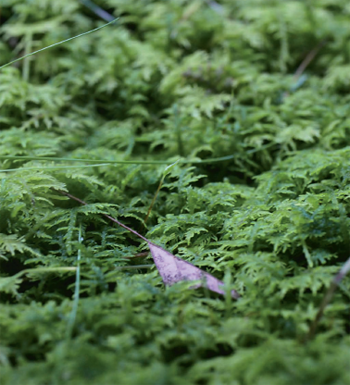
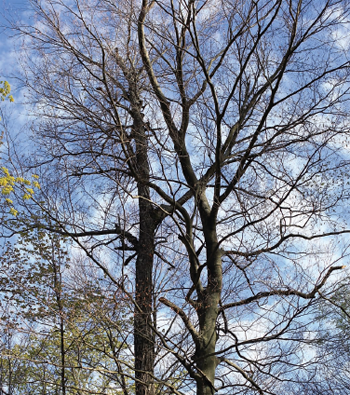
Minimal but even in the mossy environment surrounded by forests and lakes.
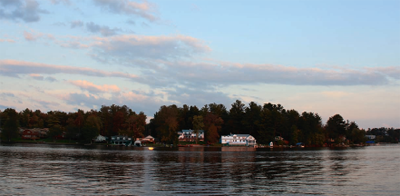
Circumstances like shade and wildlife may keep the garden at my weekend lake house.
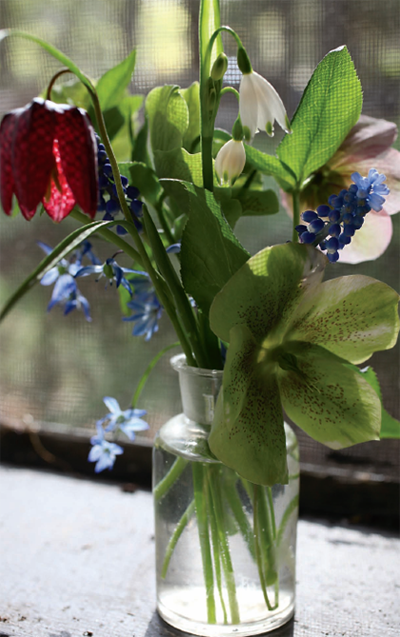
I manage to grow enough flowers to provide new surprises each weekend. One May afternoon when the garden was at its peak, I picked this bunch of fritillaries, leucojum, hellebores, and grape hyacinths.
During the 1970s, we had little concept of preserving resources on a personal level in our medium-size Texas town. Every lawn was bright green. Even though the city sponsored a drawing competition in my elementary school to see which student could design the best poster for the Lower Clear Fork of the Brazos Soil and Water Conservation District (giant sandstorms, the last vestiges of the dust bowl era, still billowed into town with some frequency), the contest inspired no ecological linkages in my mind; I just wanted to draw pretty pictures and win a blue ribbon. There was no preference for native varieties or consideration of plant suitability. We didnt care what harsh chemicals we must spray to achieve perfect flowers. Gardening for us was an act of forcibly bending nature to suit human will. It was considered highly admirable to thwart the natural cycle, to grow things in places where perhaps they didnt really want to be grown. Flower show prizes were given at the local fair for just this sort of horticulture.
But I loved flowers, and I still carry the plants I grew up with in my memory, a clear mental catalog of the flora of my old neighborhood, with each plant from the surrounding streets identified with its decades-old location. I knew every rose on the block and spent time going from bush to bush like a honeybee to compare the different scents. I remember the wisteria on the corner and the pomegranate in the alley. The Faubuses, a retired couple across the street, had the best garden around, and I would follow Mr. Faubus like a shadow as he worked in his wide-brimmed hat and tan coveralls. Today, I vividly remember the old-fashioned plants he taught me to appreciate: creeping phlox, hydrangeas, nandina, bridal-veil bush, lilacs, balloonflowers, bells of Ireland, balsam, santolina, and rosemary. Was there also a row of camellias on the side of the house? I like to think so. I saw magic in that garden that reminded me of places I read about only in books, like the Scottish manor house where the appearance of a ghost was preceded by the strong scent of heliotrope. I wouldnt see or smell heliotrope till many years later, but I can understand why the spectral lady selected it as her calling card. Soon enough, I grew up and became busy with school and the life of a teenager. My interest in gardening waned.
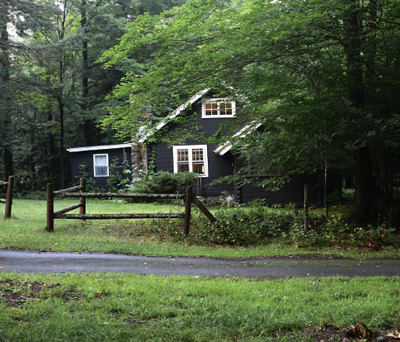
Next page







